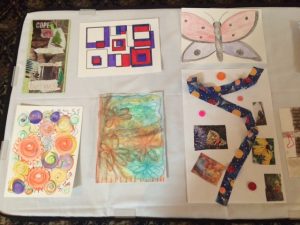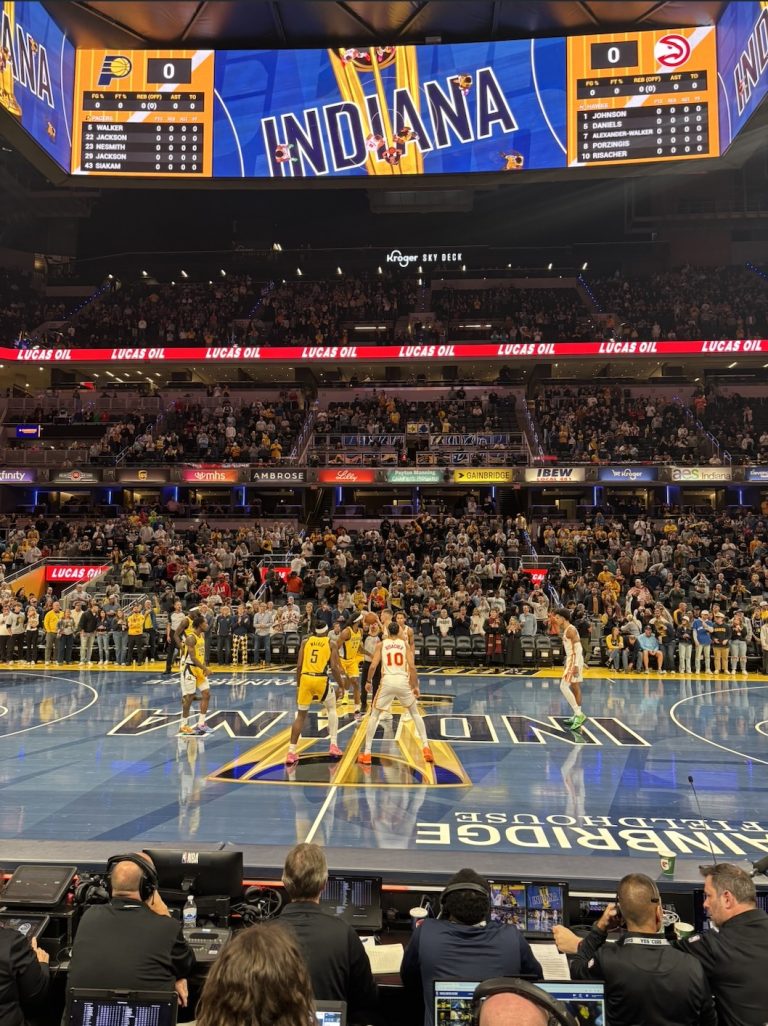Singing, dancing, writing, drawing, painting, acting and other forms of expressive arts are engaging residents at nursing homes and assisted living facilities across Indiana. While some of this programming was already in place, new activities have been added and others revitalized, thanks in part to the Expressive Arts for Long Term Care Professionals program developed by the University of Indianapolis Center for Aging & Community.
According to Senior Project Director for the Center of Aging & Community Ellen Burton, the CAC was established around 20 years ago to be a community liaison and an academic research center. They work with community partners in aging, such as assisted living facilities and nursing homes, to determine what kind of challenges they are facing, questions they have or initiatives they want to push. The CAC then brings the resources of the university and their partners together to address the challenges and develop initiatives.

The Expressive Arts for Long Term Care Professionals program is one such initiative. The CAC developed the program with funding from the Indiana State Department of Health, which was looking to support programing dedicated to improving the quality of care in nursing homes, according to Burton. When their proposal was selected to receive the funding, the CAC worked with subject matter experts and members of their regional collaborative partners to develop and launch the three part program that ran from 2016-2018.
The program focused on five modalities of expressive art. The music portion was developed by Professor of Music Rebecca Sorley. Sorley said that she was initially hesitant to be involved because she was not a music therapist.
Once she agreed to participate, Sorley worked alongside three therapists from out of state. One other faculty member from UIndy was involved as well—Associate Adjunct Faculty of Art & Design Sarah McKinney created the visual arts section.
“I had sort of a learning curve to kind of get to the place I needed to be,” Sorley said. “I didn’t really feel at all like I was the one who would really know the most about this. But I knew that I could educate myself about it and I learned a lot in the process.”
The first phase of the program was a four day class for activities directors, nurses and other nursing home staff. According to Burton, the goal of the class was to teach participants activities from each modality that they could lead and implement in their facilities. The first portion of the class consisted of a presentation about the benefits and research surrounding the expressive arts, or the “why,” as Burton said.
“The first thing we had to do was get them [nursing home staff] over that initial instinct of, ‘Oh, I’m not really creative. I can’t do that kind of stuff,’” Burton said. “And some people have that about everything, and some people were like, ‘Well, yeah, I can sing, but I can’t draw.’ or ‘I can do a collage out of a magazine, but I don’t play an instrument so we don’t do a lot of the music stuff.’ . . . [We] had to get them comfortable with the idea that they themselves are creative and that everyone has creative abilities.”
The next step in the class was focused on giving participants the opportunity to experience activities in each of the modalities. Each subject matter expert had half a day to present more in-depth research and information about their area as well as walk attendees through a few activities they could implement at their facility, according to Burton.
For her portion, Sorley said she focused on what could be done in long-term care facilities with music by non-music therapists.
“[We] had to get them comfortable with the idea that they themselves are creative…”
After the three days of learning, Burton said that participants returned to their facilities and spent the next two weeks implementing the activities that they had learned. The group came back together for a fourth day and discussed their experiences as well as spent time troubleshooting. According to Burton, the four day course was taught six times in various locations around the state.
The second phase of the program came into play afterward. The CAC, Sorley and McKinney developed a second, two day class called Train the Trainer, where participants from the first phase had the opportunity to learn how to teach others in their facilities how to implement expressive arts activities.
Sorley said that her favorite activity from the program was part of one of the two Train the Trainer classes. Participants listened to Edvard Grieg’s ‘In the Hall of the Mountain King,’ came up with a storyline based on the song and then acted it out.
“There was one group, they were thinking of marching ants, so the whole thing was ants, and they were just great. It was just so creative,” Sorley said. “I had never thought of that piece that way.”
After the Train the Trainer class, the CAC asked their regional collaboratives to continue to implement expressive arts programming and track outcomes. This was the third phase of the program, according to Burton.
When the collaboratives reported back, Burton said that the number of expressive arts activities implemented had increased between 75 to 450 percent. One group decreased their falls with injury by 57 percent. Another tracked how the activities impacted perceptions of pain by looking at the rates of as needed pain medications, which decreased by 78 percent, according to Burton.
Beyond the data, Burton said that activities directors, staff members and residents alike have been positively impacted by the expressive arts programming that has been implemented in facilities across the state. In one facility, short-term residents enjoyed the activities so much that some returned to help lead them for the long-term residents.
“[There] was a resident who was basically non-verbal, and they [staff] found just the right music, and he got up out of his chair and he danced with his wife,” Burton said. “He hadn’t really connected with her in a long time because of advanced stages of dementia. It was very cool.”
Burton said that several facilities have held art exhibitions that showcase residents’ artwork, videos of dance and drama performances and even collaborative pieces. Another facility completely overhauled their programming after attending the workshop.
“The one that really got me was during one of the first classes,” Burton said. “One of the activities directors, I called her up, you know, ‘Hey, how’s it going?’ She’s like, ‘You know what? There is so much more laughter in our building right now.’ We were just so amazed at all of the positive outcomes that came out of this.”
Despite the positive feedback, there are no plans to hold another round of programming due to lack of funding, according to Burton. However, the CAC has been looking into tweaking the program to fit other, more specific, needs. There has also been interest from other states after the program was awarded the 2017 Promising Practice for Education and Communication by the Association of Health Facility Survey Agencies.
“We were just very pleased that it [the award] happened… we were completely surprised…” Burton said. “The assistant commissioner at the state department of health, he submitted this. We didn’t know. So he just sent us an email one day and we were like, ‘What?’ So it was very cool, it was a very nice surprise. Just really pleasing that all the people working on this were recognized for the incredible things that they have done.”






